Keeping An Eye On Hurricane Florence
Keeping an Eye on Hurricane Florence
What do hurricanes look like from space? It depends on how you look! We have satellites, cameras and instruments all working together to give us the big picture of storms like Florence.
As the International Space Station passed over Hurricane Florence, astronauts and cameras on board got a look down into the hurricane’s eye.
Our Global Precipitation Measurement (GPM) mission sees storms all around the planet by measuring rainfall. These measurements come from a constellation of satellites working together, including some from our partner organizations like the National Oceanic and Atmospheric Administration (NOAA) and the Japanese Aerospace Exploration Agency (JAXA).

On Sept. 7, our GPM core observatory satellite flew over Florence, capturing a 3D image as the storm’s clouds started to break apart before reforming.

Other NOAA satellites, like GOES, gather high-resolution, detailed views of hurricanes, letting us peek into the eye of the storm.

Zooming out a bit, the Suomi-NPP satellite helps us track Hurricane Florence, and the following tropical storms, as they move closer to landfall or dissipate over the ocean.

From farther away (a million miles from Earth!), the EPIC instrument on NOAA’s DSCOVR satellite captured images of all three of these storms as they moved closer to North America.

We use our space-based and airborne instruments to provide innovative data on hurricanes to advance scientists’ understanding of these storms. You can follow our latest views of Hurricane Florence here and get the latest forecast from NOAA’s National Hurricane Center here.
More Posts from Nasa and Others
What’s Up - February 2018
What’s Up For February?

This month, in honor of Valentine's Day, we'll focus on celestial star pairs and constellation couples.

Let's look at some celestial pairs!

The constellations Perseus and Andromeda are easy to see high overhead this month.

According to lore, the warrior Perseus spotted a beautiful woman--Andromeda--chained to a seaside rock. After battling a sea serpent, he rescued her.

As a reward, her parents Cepheus and Cassiopeia allowed Perseus to marry Andromeda.

The great hunter Orion fell in love with seven sisters, the Pleiades, and pursued them for a long time. Eventually Zeus turned both Orion and the Pleiades into stars.

Orion is easy to find. Draw an imaginary line through his belt stars to the Pleiades, and watch him chase them across the sky forever.

A pair of star clusters is visible on February nights. The Perseus Double Cluster is high in the sky near Andromeda's parents Cepheus and Cassiopeia.

Through binoculars you can see dozens of stars in each cluster. Actually, there are more than 300 blue-white supergiant stars in each of the clusters.

There are some colorful star pairs, some visible just by looking up and some requiring a telescope. Gemini's twins, the brothers Pollux and Castor, are easy to see without aid.

Orion's westernmost, or right, knee, Rigel, has a faint companion. The companion, Rigel B, is 500 times fainter than the super-giant Rigel and is visible only with a telescope.

Orion's westernmost belt star, Mintaka, has a pretty companion. You'll need a telescope.

Finally, the moon pairs up with the Pleiades on the 22nd and with Pollux and Castor on the 26th.
Watch the full What’s Up for February Video:
There are so many sights to see in the sky. To stay informed, subscribe to our What’s Up video series on Facebook.
Make sure to follow us on Tumblr for your regular dose of space: http://nasa.tumblr.com.

GALAXY BRAIN 🧠
Our Hubble Space Telescope spotted this planetary nebula in the constellation of Orion. It's really a vast orb of gas in space, with its aging star in the center... but what does it look like to you? 🤔
When stars like the Sun grow advanced in age, they expand and glow red. These so-called red giants then begin to lose their outer layers of material into space. More than half of such a star's mass can be shed in this manner, forming a shell of surrounding gas. At the same time, the star's core shrinks and grows hotter, emitting ultraviolet light that causes the expelled gases to glow.
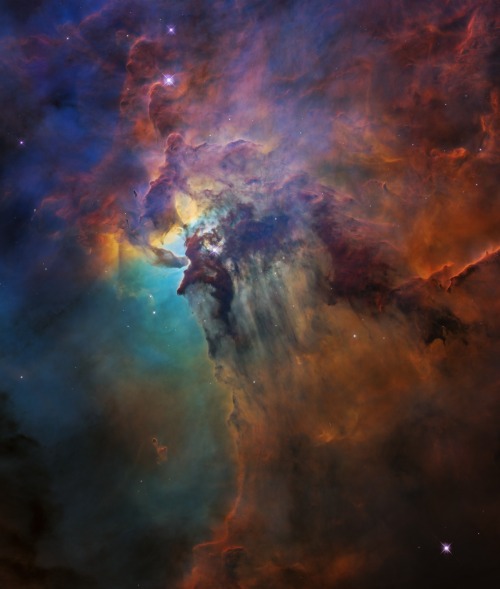
The Lagoon Nebula
This colorful image, taken by our Hubble Space Telescope between Feb. 12 and Feb. 18, 2018 , celebrated the Earth-orbiting observatory’s 28th anniversary of viewing the heavens, giving us a window seat to the universe’s extraordinary tapestry of stellar birth and destruction.
At the center of the photo, a monster young star 200,000 times brighter than our Sun is blasting powerful ultraviolet radiation and hurricane-like stellar winds, carving out a fantasy landscape of ridges, cavities, and mountains of gas and dust.
This region epitomizes a typical, raucous stellar nursery full of birth and destruction. The clouds may look majestic and peaceful, but they are in a constant state of flux from the star’s torrent of searing radiation and high-speed particles from stellar winds. As the monster star throws off its natal cocoon of material with its powerful energy, it is suppressing star formation around it.
Make sure to follow us on Tumblr for your regular dose of space: http://nasa.tumblr.com.
You Are Made of Stardust
Though the billions of people on Earth may come from different areas, we share a common heritage: we are all made of stardust! From the carbon in our DNA to the calcium in our bones, nearly all of the elements in our bodies were forged in the fiery hearts and death throes of stars.
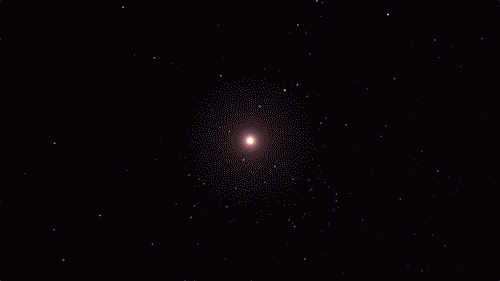
The building blocks for humans, and even our planet, wouldn’t exist if it weren’t for stars. If we could rewind the universe back almost to the very beginning, we would just see a sea of hydrogen, helium, and a tiny bit of lithium.
The first generation of stars formed from this material. There’s so much heat and pressure in a star’s core that they can fuse atoms together, forming new elements. Our DNA is made up of carbon, hydrogen, oxygen, nitrogen, and phosphorus. All those elements (except hydrogen, which has existed since shortly after the big bang) are made by stars and released into the cosmos when the stars die.

Each star comes with a limited fuel supply. When a medium-mass star runs out of fuel, it will swell up and shrug off its outer layers. Only a small, hot core called a white dwarf is left behind. The star’s cast-off debris includes elements like carbon and nitrogen. It expands out into the cosmos, possibly destined to be recycled into later generations of stars and planets. New life may be born from the ashes of stars.
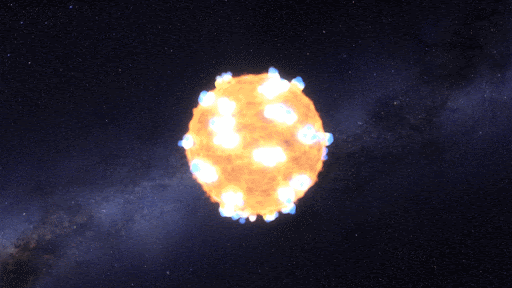
Massive stars are doomed to a more violent fate. For most of their lives, stars are balanced between the outward pressure created by nuclear fusion and the inward pull of gravity. When a massive star runs out of fuel and its nuclear processes die down, it completely throws the star out of balance. The result? An explosion!
Supernova explosions create such intense conditions that even more elements can form. The oxygen we breathe and essential minerals like magnesium and potassium are flung into space by these supernovas.
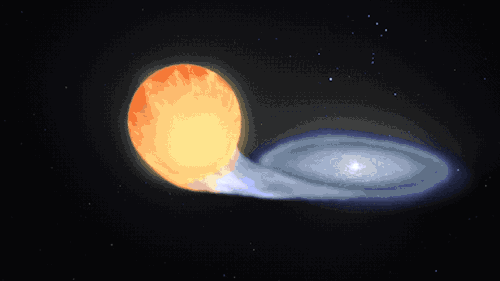
Supernovas can also occur another way in binary, or double-star, systems. When a white dwarf steals material from its companion, it can throw everything off balance too and lead to another kind of cataclysmic supernova. Our Nancy Grace Roman Space Telescope will study these stellar explosions to figure out what’s speeding up the universe’s expansion.
This kind of explosion creates calcium – the mineral we need most in our bodies – and trace minerals that we only need a little of, like zinc and manganese. It also produces iron, which is found in our blood and also makes up the bulk of our planet’s mass!

A supernova will either leave behind a black hole or a neutron star – the superdense core of an exploded star. When two neutron stars collide, it showers the cosmos in elements like silver, gold, iodine, uranium, and plutonium.

Some elements only come from stars indirectly. Cosmic rays are nuclei (the central parts of atoms) that have been boosted to high speed by the most energetic events in the universe. When they collide with atoms, the impact can break them apart, forming simpler elements. That’s how we get boron and beryllium – from breaking star-made atoms into smaller ones.
Half a dozen other elements are created by radioactive decay. Some elements are radioactive, which means their nuclei are unstable. They naturally break down to form simpler elements by emitting radiation and particles. That’s how we get elements like radium. The rest are made by humans in labs by slamming atoms of lighter elements together at super high speeds to form heavier ones. We can fuse together elements made by stars to create exotic, short-lived elements like seaborgium and einsteinium.
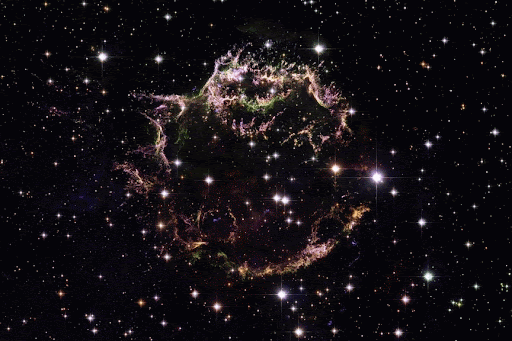
From some of the most cataclysmic events in the cosmos comes all of the beauty we see here on Earth. Life, and even our planet, wouldn’t have formed without them! But we still have lots of questions about these stellar factories.
In 2006, our Stardust spacecraft returned to Earth containing tiny particles of interstellar dust that originated in distant stars, light-years away – the first star dust to ever be collected from space and returned for study. You can help us identify and study the composition of these tiny, elusive particles through our Stardust@Home Citizen Science project.
Our upcoming Roman Space Telescope will help us learn more about how elements were created and distributed throughout galaxies, all while exploring many other cosmic questions. Learn more about the exciting science this mission will investigate on Twitter and Facebook.
Make sure to follow us on Tumblr for your regular dose of space!
What would happen if a Black hole would be near the earth? What would be the consequences to humans?
can you describe how earth looks like from space?
Time for some Sun salutations 🧘
Flow through 133 days of the Sun's activity from Aug. 12 to Dec. 22, 2022, as captured by our Solar Dynamics Observatory. From its orbit around Earth, SDO has steadily imaged the Sun in 4K resolution for nearly 13 years.
Video description: Mellow music plays as compiled images taken every 108 seconds condenses 133 days of solar observations into an hour-long video. The video shows bright active regions passing across the face of the Sun as it rotates.
Credit: NASA's Goddard Space Flight Center, Scott Wiessinger (Lead Producer and editor), Tom Bridgman (Lead Visualizer), Lars Leonhard (music)
What did you major in? What was your college experience?
The Special Ingredients…of Earth!

With its blue skies, puffy white clouds, warm beaches and abundant life, planet Earth is a pretty special place. A quick survey of the solar system reveals nothing else like it. But how special is Earth, really?

One way to find out is to look for other worlds like ours elsewhere in the galaxy. Astronomers using our Kepler Space Telescope and other observatories have been doing just that!

In recent years they’ve been finding other planets increasingly similar to Earth, but still none that appear as hospitable as our home world. For those researchers, the search goes on.

Another group of researchers have taken on an entirely different approach. Instead of looking for Earth-like planets, they’ve been looking for Earth-like ingredients. Consider the following:

Our planet is rich in elements such as carbon, oxygen, iron, magnesium, silicon and sulfur…the stuff of rocks, air, oceans and life. Are these elements widespread elsewhere in the universe?

To find out, a team of astronomers led by the Japanese Aerospace Exploration Agency (JAXA), with our participation, used Suzaku. This Japanese X-ray satellite was used to survey a cluster of galaxies located in the direction of the constellation Virgo.

The Virgo cluster is a massive swarm of more than 2,000 galaxies, many similar in appearance to our own Milky Way, located about 54 million light years away. The space between the member galaxies is filled with a diffuse gas, so hot that it glows in X-rays. Instruments onboard Suzaku were able to look at that gas and determine which elements it’s made of.

Reporting their findings in the Astrophysical Journal Letters, they reported findings of iron, magnesium, silicon and sulfur throughout the Virgo galaxy cluster. The elemental ratios are constant throughout the entire volume of the cluster, and roughly consistent with the composition of the sun and most of the stars in our own galaxy.

When the Universe was born in the Big Bang 13.8 billon years ago, elements heavier than carbon were rare. These elements are present today, mainly because of supernova explosions.

Massive stars cook elements such as, carbon, oxygen, iron, magnesium, silicon and sulfur in their hot cores and then spew them far and wide when the stars explode.

According to the observations of Suzaku, the ingredients for making sun-like stars and Earth-like planets have been scattered far and wide by these explosions. Indeed, they appear to be widespread in the cosmos. The elements so important to life on Earth are available on average and in similar relative proportions throughout the bulk of the universe. In other words, the chemical requirements for life are common.

Earth is still special, but according to Suzaku, there might be other special places too. Suzaku recently completed its highly successful mission.
Make sure to follow us on Tumblr for your regular dose of space: http://nasa.tumblr.com
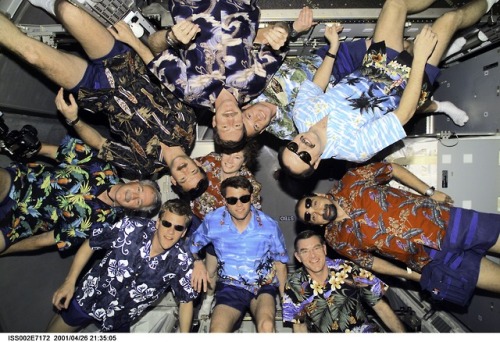
3 … 2 … 1… ALOHA!
Sometimes in space, you have to set your clocks to island time and gather for a good Hawaiian shirt day. In this 2001 #TBT, Expedition Two and STS-100 crew members gather for a group photo with a pre-set digital still camera.
Clockwise from the 12 o'clock point in the circle are Kent V. Rominger, Yuri V. Lonchakov, Yury V. Usachev, Umberto Guidoni, James S. Voss, Jeffrey S. Ashby, Scott E. Parazynski, John L. Phillips and Chris A. Hadfield, with Susan J. Helms at center. Usachev, Helms and Voss are members of three Expedition Two crew, with the other seven serving as the STS-100 crew on the Space Shuttle Endeavour. Usachev and Lonchakov represent Rosaviakosmos; Guidoni is associated with the European Space Agency (ESA); and Hadfield is from the Canadian Space Agency (CSA).
Make sure to follow us on Tumblr for your regular dose of space: http://nasa.tumblr.com.
-
 sol-domino liked this · 1 year ago
sol-domino liked this · 1 year ago -
 missxdelaneyart liked this · 2 years ago
missxdelaneyart liked this · 2 years ago -
 honovi18 reblogged this · 5 years ago
honovi18 reblogged this · 5 years ago -
 honovi18 liked this · 5 years ago
honovi18 liked this · 5 years ago -
 scfthazard-blog liked this · 6 years ago
scfthazard-blog liked this · 6 years ago -
 fluorescent-black liked this · 6 years ago
fluorescent-black liked this · 6 years ago -
 anonnn00 liked this · 6 years ago
anonnn00 liked this · 6 years ago -
 prancynancyfaggotboy liked this · 6 years ago
prancynancyfaggotboy liked this · 6 years ago -
 annoyinglandcollectionspost-blog liked this · 6 years ago
annoyinglandcollectionspost-blog liked this · 6 years ago -
 tioz liked this · 6 years ago
tioz liked this · 6 years ago -
 themissdreamingstories liked this · 6 years ago
themissdreamingstories liked this · 6 years ago -
 garycup liked this · 6 years ago
garycup liked this · 6 years ago -
 woo1691 liked this · 6 years ago
woo1691 liked this · 6 years ago -
 aseelalajlan liked this · 6 years ago
aseelalajlan liked this · 6 years ago -
 shannon-charlesworth-art liked this · 6 years ago
shannon-charlesworth-art liked this · 6 years ago -
 claidheamh-eisg liked this · 6 years ago
claidheamh-eisg liked this · 6 years ago -
 seventhpaw reblogged this · 6 years ago
seventhpaw reblogged this · 6 years ago -
 bri-loves liked this · 6 years ago
bri-loves liked this · 6 years ago -
 the-rhythm-of-human-bones liked this · 6 years ago
the-rhythm-of-human-bones liked this · 6 years ago -
 seagreenticket liked this · 6 years ago
seagreenticket liked this · 6 years ago -
 goldsourcegold liked this · 6 years ago
goldsourcegold liked this · 6 years ago -
 delightfulpaperpost liked this · 6 years ago
delightfulpaperpost liked this · 6 years ago -
 fleurdebach5-blog liked this · 6 years ago
fleurdebach5-blog liked this · 6 years ago -
 thenightwhispers reblogged this · 6 years ago
thenightwhispers reblogged this · 6 years ago -
 bulanfan liked this · 6 years ago
bulanfan liked this · 6 years ago -
 toreadorcarol liked this · 6 years ago
toreadorcarol liked this · 6 years ago -
 clemencejames liked this · 6 years ago
clemencejames liked this · 6 years ago
Explore the universe and discover our home planet with the official NASA Tumblr account
1K posts